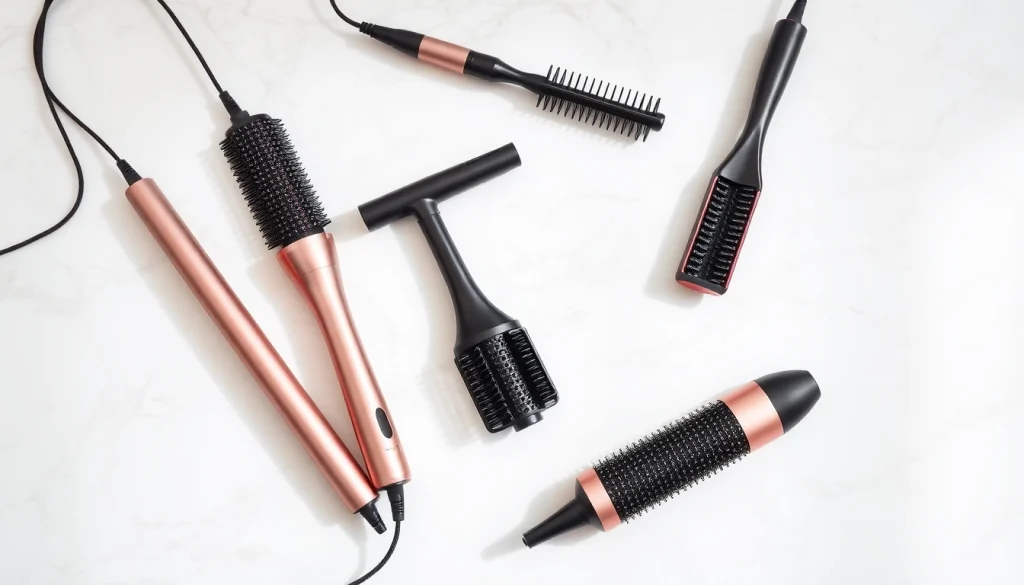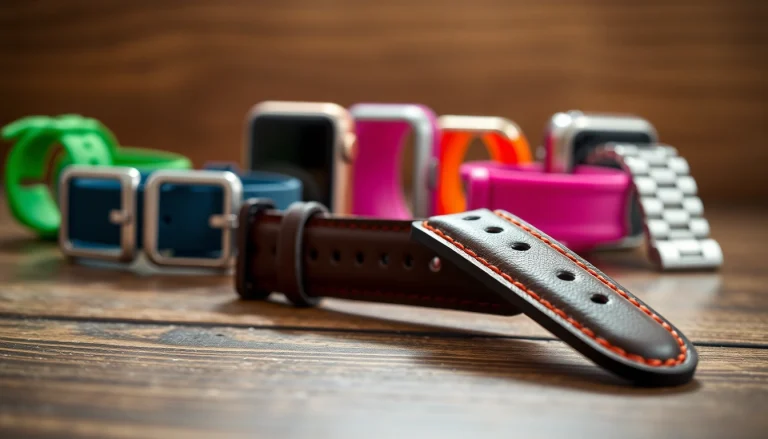
Understanding Heat Tools for Hair
As anyone who has spent time styling their hair knows, the right tools can make all the difference. Among these, heat tools for hair have established themselves as essential in achieving various hairstyles. But what exactly are heat tools, and why are they so widely used?
What Are Heat Tools and Why Use Them?
Heat tools refer to any styling appliance that utilizes heat to alter the texture, shape, and design of hair. This includes hair dryers, curling irons, flat irons, and heated brushes. The primary purpose of these tools is to enable individuals to create hairstyles that may not be achievable naturally. For example, curling irons create beautiful bouncy curls or waves, while flat irons can provide a sleek and straight look.
The reason for the popularity of heat tools lies in their versatility. They can be used to create everything from casual waves to elegant updos, making them suitable for any occasion. Additionally, advancements in technology have led to the development of tools that are less damaging to hair, making these options compelling for health-conscious consumers.
Types of Heat Tools for Hair Care
There are several types of heat tools available, each designed for specific styling needs:
- Hair Dryers: These are used to dry hair quickly while also providing the ability to style the hair as it dries.
- Curling Irons: Designed to create curls or waves in the hair, these tools come in various barrel sizes to achieve different curl types.
- Flat Irons: Ideal for straightening hair, flat irons can also be used to create curls with the right technique.
- Hot Brushes: Combining the functions of a hairbrush and a heat tool, hot brushes can create volume and waves while simultaneously straightening hair.
- Wanding Tools: Often featuring a tapered barrel, wands create more natural-looking curls and are favored for their versatility and ease of use.
Safety Considerations When Using Heat Tools
While heat tools are incredibly effective, they also pose risks if not used properly. High temperatures can damage hair, leading to dryness and breakage. To mitigate these risks, it’s important to:
- Always use a heat protectant spray before styling.
- Avoid using heat tools on wet or damp hair.
- Monitor the heat settings based on hair type; finer hair often requires lower temperatures while thicker hair can endure higher settings.
- Limit the use of heat tools to avoid cumulative damage over time.
Choosing the Right Heat Tool for Your Hair Type
Heat Tools for Different Hair Textures
Understanding your hair type is crucial when selecting heat tools. Different textures respond uniquely to heat styling:
- Fine Hair: Fine hair is more susceptible to heat damage, so using a tool with adjustable heat settings is essential. Low to medium heat should be sufficient for styling.
- Thick Hair: Thicker hair can typically endure higher temperatures. High-heat tools can help manage volume and achieve styling goals more efficiently.
- Curly Hair: For naturally curly hair, tools like curling wands may work better to create defined waves without adding extra heat to the natural curl.
- Coarse Hair: Coarse hair often requires substantial heat to manage effectively. Tools with larger plates or barrels may provide better results.
Evaluating Heat Settings and Materials
When selecting heat tools, the materials used in their construction and the available heat settings should be key considerations:
- Ceramic: Excellent for even heat distribution, ceramic tools reduce hotspots and minimize damage.
- Tourmaline: Often combined with ceramic, these tools emit negative ions that help reduce frizz while locking in moisture.
- Titanium: Known for its durability and even heat, titanium tools can reach high temperatures quickly, making them suitable for professionals.
Additionally, adjustable heat settings allow users to customize their styling experience based on hair type, which can dramatically reduce the risk of damage over time.
Comparing Brands and Their Offerings
The market for heat tools is vast, featuring a myriad of brands each with unique technologies and offerings. Some of the most reputable brands include:
- Dyson: Known for their innovative design and technology, Dyson hair tools boast advanced features such as intelligent heat control.
- T3: T3 products have a reputation for their stylish design and effective performance, particularly in maintaining healthy hair.
- GHD: This brand is renowned for producing consistent and high-quality styling tools that suit various hair types.
- BaByliss: BaByliss features a wide range of tools catering to both professional and home stylists, delivering high-quality results.
Best Practices for Using Heat Tools
How to Prepare Your Hair for Styling
Preparation is key to effective heat styling. Here are best practices to ensure your hair is ready:
- Wash and Condition: Start by washing your hair with a nourishing shampoo and conditioner to provide moisture and protection.
- Towel Dry: Gently towel-dry your hair to remove excess water, ensuring it’s not dripping wet before applying any heat.
- Use a Heat Protectant: Always apply a heat protectant spray or serum to shield hair from direct heat damage.
- Section Your Hair: Working in small sections can ensure that heat tools effectively style hair without missing strands.
Techniques for Effective Use of Heat Tools
The way you use your heat tools can have a significant impact on the results:
- For Curling Irons: Always wrap hair around the barrel away from the face for a flattering look. Hold for a few seconds before releasing for defined curls.
- For Flat Irons: Run the flat iron slowly down the hair shaft to avoid crimping and ensure a sleek finish.
- Using Hot Brushes: Slowly glide the hot brush through sections of hair to achieve volume and movement smoothly.
Common Mistakes to Avoid
Even experienced stylists can make mistakes that lead to poor results or damage:
- Using Too High of a Temperature: Always evaluate your hair type before adjusting the temperature; higher isn’t always better.
- Neglecting Maintenance: Failing to clean and care for heat tools can lead to poor performance and product buildup on your hair.
- Styling Wet Hair: Always ensure your hair is completely dry before applying any heat, as wet hair can lead to severe damage.
- Not Using a Heat Protectant: Skipping this crucial step can lead to weakened, damaged hair over time.
Maintaining Your Heat Tools for Longevity
Cleaning and Care Tips for Heat Tools
To ensure the longevity and performance of your heat tools, regular maintenance is essential:
- Wipe Down Surfaces: After each use, wipe down the plates of your flat iron or curling iron with a soft cloth to remove product buildup.
- Deep Cleaning: Periodically, deep clean tools as per the manufacturer’s instructions to rid them of any residue or buildup that may hinder performance.
- Check for Damage: Regularly inspect cords and plugs for wear and tear; replace any damaged components immediately to prevent accidents.
Storage Solutions to Preserve Performance
Storing heat tools properly can prevent damage and maintain performance. Consider these practices:
- Heat Resistant Mats: Use mats to prevent surfaces from heat damage and to provide a safe space for cooling tools.
- Avoid Entanglement: Store cords wrapped loosely to prevent knots and potential damage to the wiring.
- Designated Spaces: Create a specific area for your heat tools to ensure they are stored safely and securely when not in use.
When to Replace Your Heat Tools
Recognizing when it’s time to replace your heat tools is crucial for maintaining healthy hair:
- Inconsistent Heating: If your tool no longer heats evenly or takes longer than usual to heat up, it might be time for a change.
- Visible Damage: Cracks, peeling, or frayed cords are signs that you should replace your tool for safety reasons.
- Poor Performance: If your styling tools are no longer delivering the results you desire, it could indicate that it’s time to invest in a new one.
Innovative Trends in Heat Tools for Hair
New Technologies Enhancing Heat Tools
Innovation in heat tools has led to the introduction of advanced features such as:
- Smart Technology: Some newer heat tools come with intelligent heat sensing technology that adjusts the temperature based on hair moisture levels.
- Ionic Technology: Tools that emit negative ions help to eliminate frizz and static, making hair smoother and shinier.
Eco-Friendly Heat Tool Options
The shift towards sustainability has influenced the heat tool market, presenting eco-friendly alternatives:
- Energy Efficient Designs: New models are designed to consume less power while still delivering exceptional results.
- Recyclable Materials: Some manufacturers are utilizing recyclable materials in their product designs, helping to reduce environmental impact.
Future Predictions for Hair Styling Tools
The future of heat tools seems bright with the potential for even more advancements, including:
- Customizable Temperature Controls: Tools that offer advanced temperature controls tailored to individual hair scans may soon become standard.
- AI Integration: The use of artificial intelligence to analyze hair types and styling preferences is on the horizon, promising highly personalized styling experiences.





